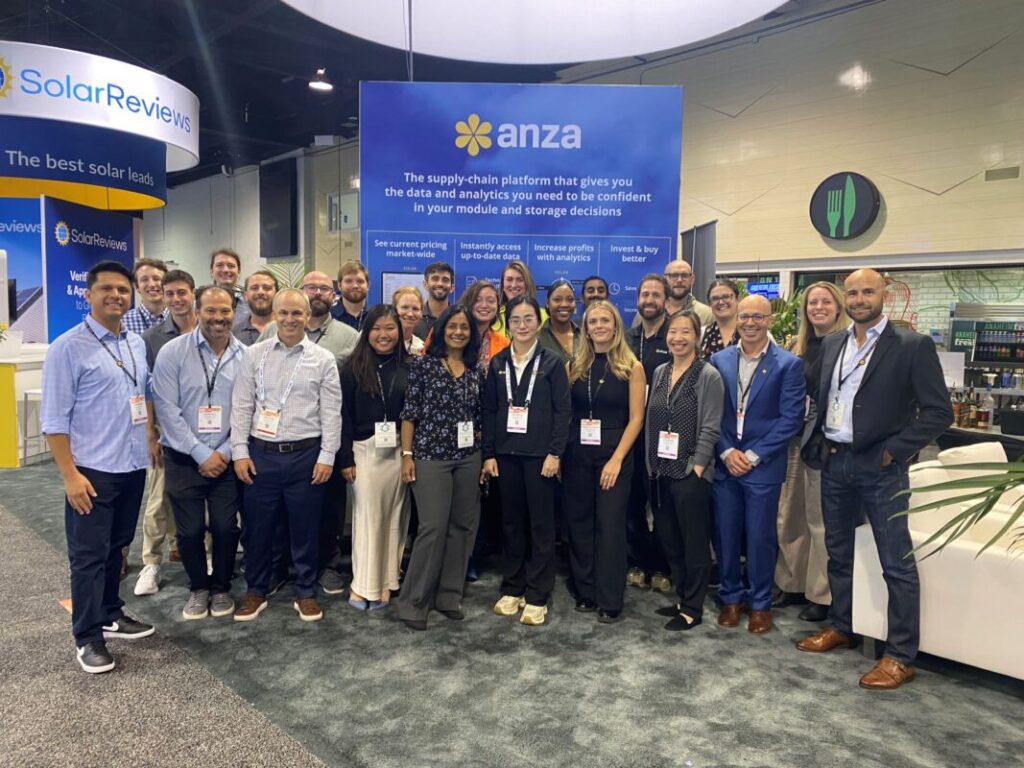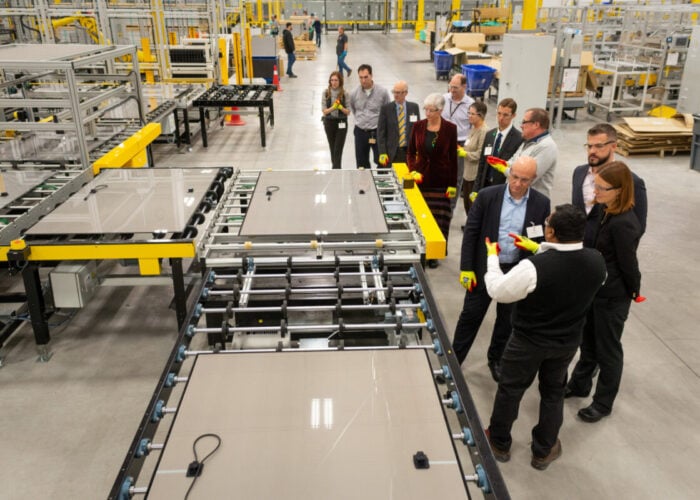
In 2024, the US solar market has seen prices of solar modules and battery decline, however the impact on prices from the ongoing anti-dumping and countervailing duty (AD/CVD) case remains to be seen in 2025. PV Tech spoke to Mike Hall, CEO and co-founder of Anza, about the 2024 performance and 2025 outlook of the US solar market and the challenge of interconnection in the US.
PV Tech: In both your own organisation and the wider market, what were the biggest highlights or milestones of 2024 and why?
Try Premium for just $1
- Full premium access for the first month at only $1
- Converts to an annual rate after 30 days unless cancelled
- Cancel anytime during the trial period
Premium Benefits
- Expert industry analysis and interviews
- Digital access to PV Tech Power journal
- Exclusive event discounts
Or get the full Premium subscription right away
Or continue reading this article for free
Mike Hall: This year, our most significant milestone was the release of our data and software subscription product, a game changer that helps meaningfully accelerate the deployment of renewable energy in the US. Users having the ability to see the entirety of available product options on demand is transformative for the industry.
We launched our market intelligence module in October, offering deep intelligence on pricing trends – past and future – that are all informed by the largest database of price quotes in the industry. With data and insights of more than 95% of the US module supply, Anza is able to provide forecasting based on what companies are actually quoting.
Industry-wide, we’ve seen continued declines in solar module and battery prices. Driven by IRA incentives there have been a steady increase in the number of companies ready to take purchase orders for domestically manufactured solar cells.
The newest AD/CVD preliminary ruling was also a major milestone. However, we have yet to see how this will impact pricing and module availability, so this is something we’ll be monitoring closely.
Finally, there has been a continued rise in the price of power, applying to both retail and wholesale customers.
Both in your own business and the wider industry, what were the biggest hurdles or challenges of 2024 and why?
Project development challenges persist, especially as it pertains to interconnection and permitting. Despite the Federal Energy Regulatory Commission’s (FERC’s) ruling to overhaul the interconnection process, positive measurable results have not been achieved.
The continued rise of AI and data centers has driven significant load growth. It has, and will continue to be, hard for the power industry to keep up. Meeting the energy driven by this technology and electric vehicles (EVs), especially with low carbon generation, remains a challenge.
Looking ahead to 2025, what do you foresee as the biggest opportunities, both for your own organisation and the wider market, and why?
US manufacturing will continue to grow, and so will demand. Right now, it’s a seller’s market, and this will be the case for some time. The tariff and duty landscape will continue to be dynamic.
In order to navigate, buyers will need real-time insights on product and pricing availability, as well as ensuring they have the right contractual and financial protection.
Another big opportunity for Anza next year is to provide comparisons for battery energy storage system (BESS) products. Right now, the market has very little standardisation, and Anza’s data structuring makes procurement easier for buyers.
What solar technological advancements can we expect to see in 2025?
On the solar module side, we expect to see more companies offering products using heterojunction (HJT) cell technology. This technology is more efficient than the current tunnel oxide passivated contact (TOPCon) cells widely available in the market. While the production benefits vary based on application, there will be some projects where this technology could meaningfully impact project economics. In particular, projects that are either land constrained or have very high balance of systems costs.
Unrelated to solar modules and energy storage hardware, we’ll see increased adoption of grid-enhancing technologies as a way to increase the grid’s capacity to accommodate renewable energy without having to build as many new transmission lines. Reconductoring, in particular, has the potential to meaningfully increase the rate of renewable energy deployment.
What do you foresee as the biggest challenges on the horizon in 2025 for your organisation and the wider market and why?
Interconnection, grid infrastructure and local permitting will continue to be challenges for solar and storage deployment. Political uncertainty will also be impactful, especially as the industry grapples with potential trade issues and modifications to the IRA.
US solar manufacturers are not yet ready to compete globally, and not in the short term either. There is still a significant cost premium to manufacture in the US versus other parts of the world. The supply chain in the US is still far behind southeast Asia. For the next few years, all US products will be consumed in the US, and consumption will be driven by IRA based incentives.
What would be the single most important thing that could happen in 2025 that would advance either your own organisation or the wider market, or both?
An overhaul of the interconnection process would be a massive achievement. Ideally, studies need to come down from multiple years to six months.
Widespread adoption of grid-enhancing technologies (GETs) could also massively increase the grids’s capacity to bring on more resources without more expensive upgrades.
A price on carbon would also incentivise bringing more renewable projects online, but as of now that’s unlikely.






